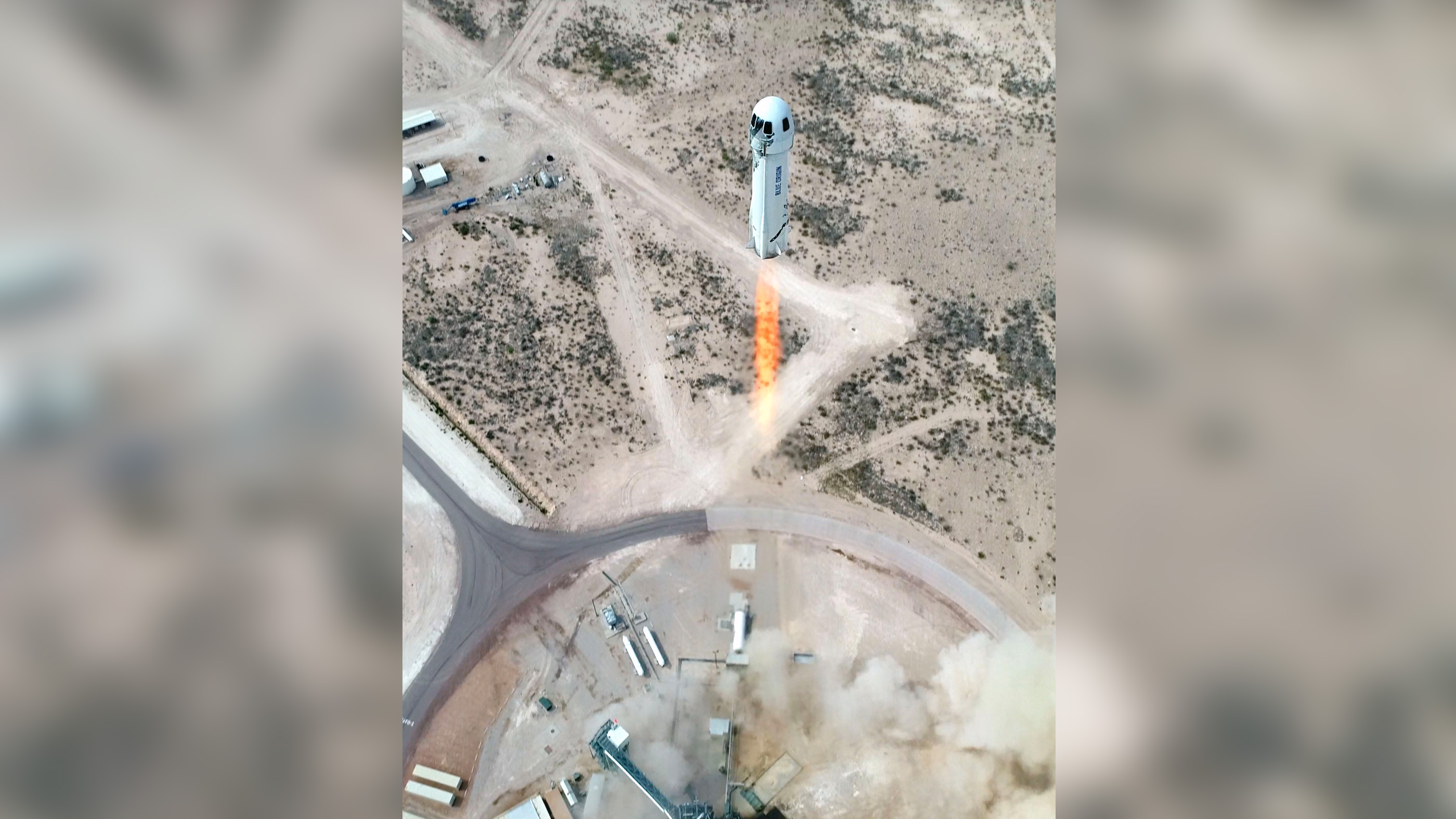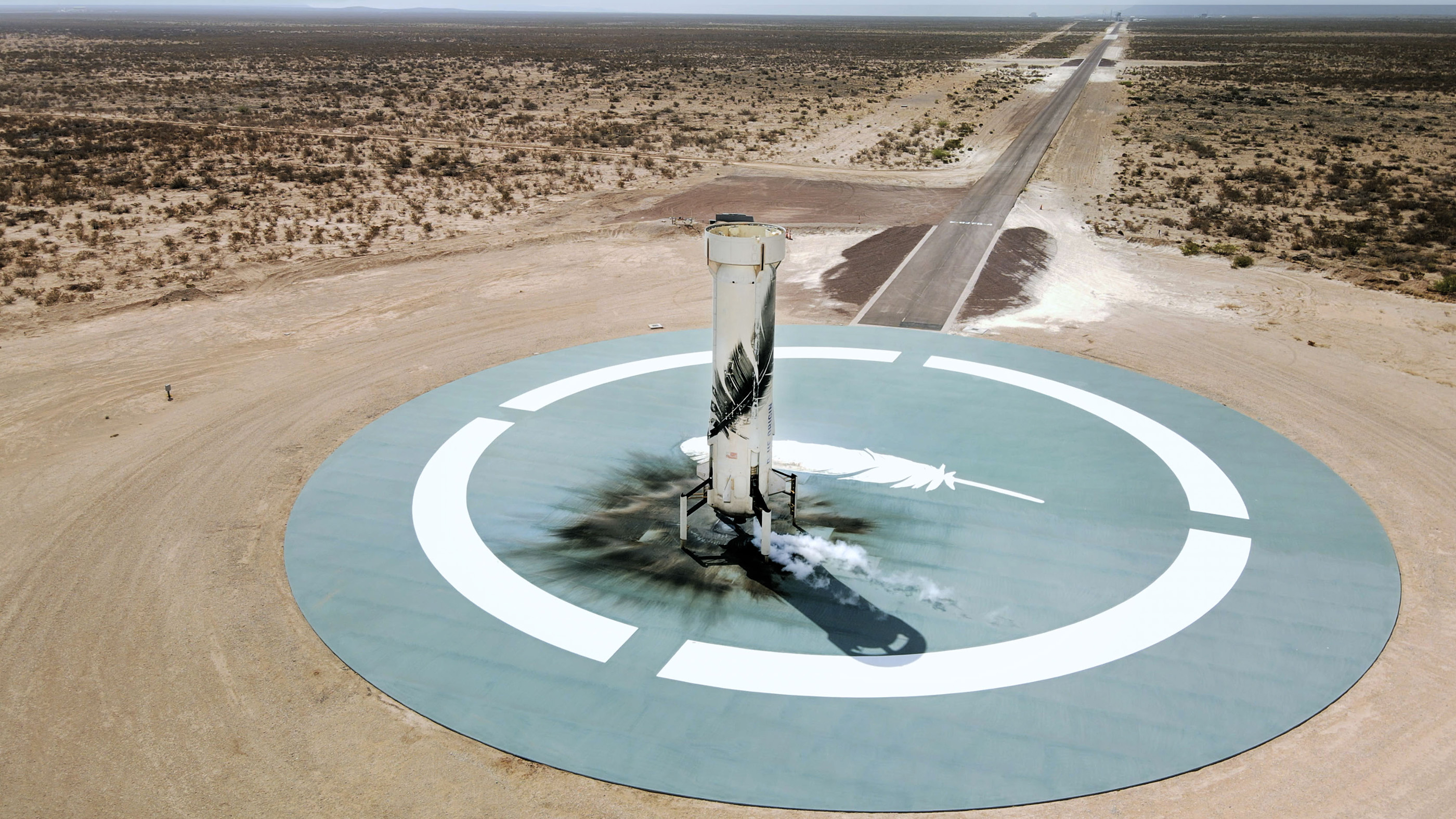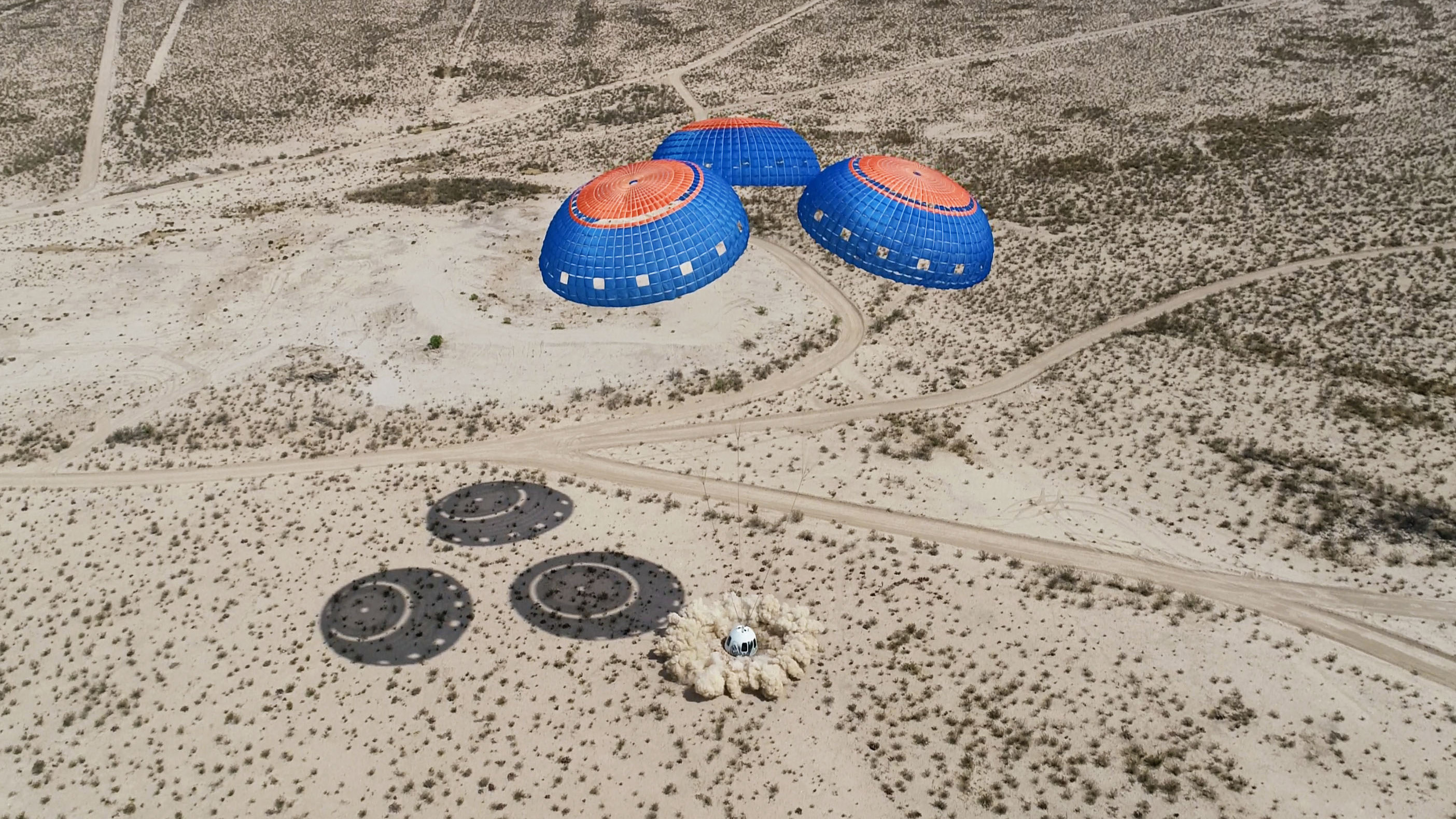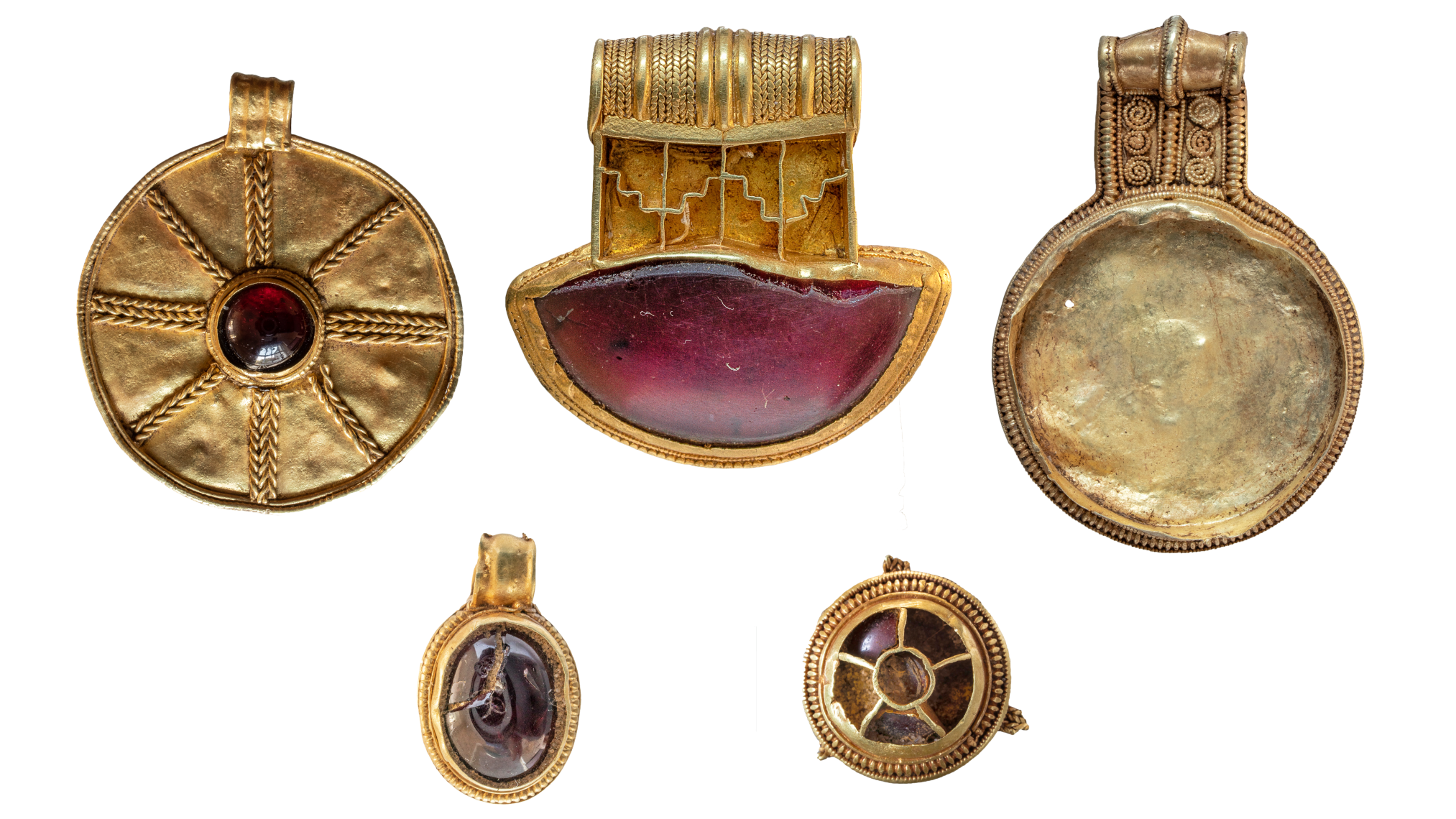
Suborbital space missions are in the news as the founders of Virgin Galactic and Blue Origin take their maiden flights. But what exactly does suborbital mean, and does the technology have uses beyond helping billionaires race each other to space?
Tomorrow (July 20), Jeff Bezos, founder of Amazon and the world's richest man, will blast off in the New Shepard rocket built by his private space company Blue Origin. This will be the firm's first crewed mission and will fly to an altitude of 62 miles (100 kilometers) before landing again at the same launchpad. Bezos was beaten to the edge of space by British entrepreneur Richard Branson, who flew July 11 to an altitude of 53 miles (86 km) in a rocket-powered spaceplane built by his company Virgin Galactic.
Related: Photos: Blue Origin's New Shepard mission to space
More: Watch Bezos launch into space in this livestream
While impressive, both vehicles are very different from standard space rockets.
"The difference, in a nutshell, is that these suborbital flights do not have enough velocity to escape into orbit," said Stephan McCandliss, a professor of astrophysics at Johns Hopkins University in Maryland.
Orbit refers to the situation where a spacecraft or satellite's sideways momentum creates a force that perfectly opposes the pull of Earth's gravity, so that it follows a curved path, constantly falling toward the planet but never getting any closer. When an orbiting spacecraft launches, it starts off vertical but then begins to tilt and pick up horizontal speed once it's through the thickest part of the atmosphere, so as to generate sufficient momentum to stay in orbit. Getting there is challenging though — the horizontal speed you need to remain in orbit depends on the altitude, but for a low-Earth orbit of 150 miles (240 km) it's around 17,000 mph (about 27,400 km/h).
"To sustain orbital motion, you have to be moving at almost 8 kilometers a second," McCandliss told Live Science. "In addition to that, you've got to get to the altitude and you have to punch through the atmosphere, and that all takes energy."
Get the world’s most fascinating discoveries delivered straight to your inbox.
Any rocket without enough energy to reach orbit will instead follow a parabolic trajectory, looping up and then back down again,McCandliss said. But while such suborbital space missions might be short-lived, passengers will still get a mindblowing view of Earth and will also experience several minutes of weightlessness.




That's because the downward stretch of the trajectory is essentially a freefall, and gravity is acting on both passengers and the vehicle in the same way. "The simple explanation is that gravity is pulling you down and it's pulling the vehicle down just as much, so locally you feel like there's no gravity," said Steven Collicott, a professor of aeronautics at Purdue University in Indiana.
That's a big pull for thrill seekers, and both Blue Origin and Virgin Galactic are hoping this market can help them sustain profitable space tourism businesses. But it also offers some interesting research opportunities, added Collicott.
Microgravity research is already carried out on the International Space Station, but flying an experiment there is hugely expensive, and equipment has to survive punishing G-forces and vibrations to get into orbit, Collicott said. In contrast, these new suborbital flights are a fraction of the cost and put far less strain on equipment.
"These tourist vehicles give us a much gentler ride to space and back," said Collicott. "So the tourism industry has created these really nice, low-cost research laboratories for us."
Suborbital flights could prove useful for experiments where researchers want to study phenomena that are normally overshadowed by the effects of gravity, such as sedimentation or coagulation of solid particles in fluids, Collicott said. He sees lots of potential for his own work trying to understand how fluids like fuel or human blood behave in low-gravity.
It could also be a cheaper way to test out spaceflight technology or experiments before they are sent on more expensive orbital or deep-space missions. For instance, it might be possible to do test runs of low-gravity emergency surgery techniques, Colicott said, or to make sure that all the fluids in a chemistry or biology experiment remain in the right place after the transition from rocket boost to zero-g.
The short duration of the weightlessness will be a limiting factor, Collicott said, but these flights also open up the prospect of researchers being able to fly with their experiments. "It just really opens up whole new fields of science that you really can't automate," he added.
These flights won't work for a lot of space scientists though, said McCandliss. He has been working with NASA for the last 30 years building sounding rockets, or instrument-carrying rockets that perform scientific experiments on suborbital flights. While these are more expensive and only single-use, they are able to reach altitudes of up to 435 miles (700 km).
Such heights are necessary for a variety of space physics experiments, including the kind of ultraviolet astronomy McCandliss studies. Even at 62 miles the atmosphere is still dense enough to interfere with electromagnetic signals and so they need to remain above this altitude for significant periods. "I would tell people, 'When you can hit [186 miles] 300 kilometers come talk with me,'" he said.
Nonetheless, McCandliss appreciates the efforts by the private space industry to increase access to space and thinks these companies are much like the early pioneers in maritime exploration or aviation.
"Some people look at this as being wasteful, but I view it as evolutionary," he said. "These are the sort of steps that you need to take if you want to have a more capable infrastructure for servicing space and dealing with space."
Originally published on Live Science.



